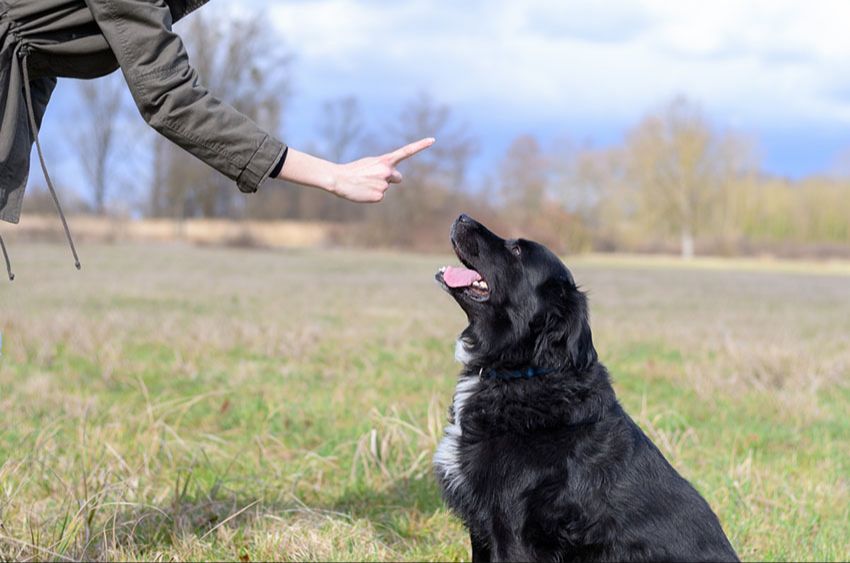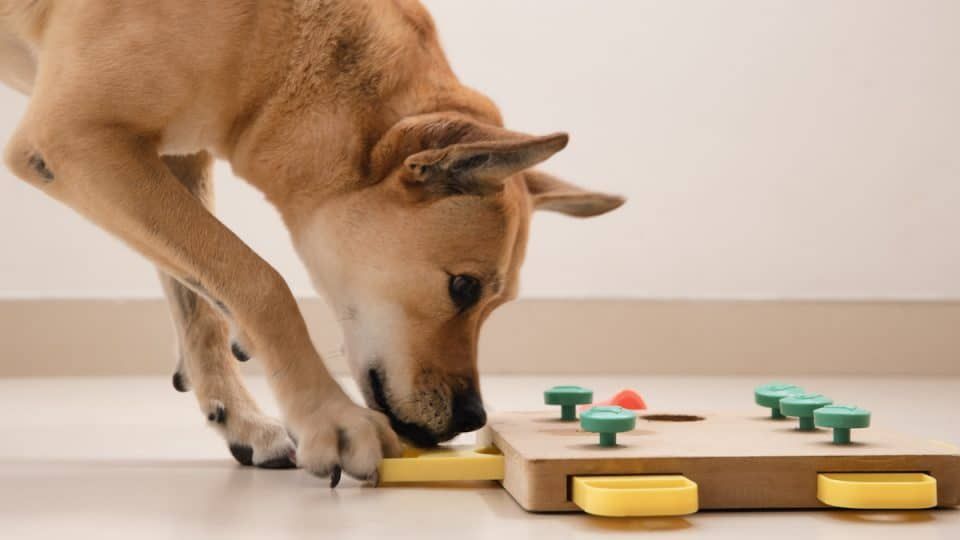Introduction
Owning a dog while working a traditional 9-5 schedule can be challenging, but is absolutely achievable with the right preparation and commitment. The key considerations are providing your dog adequate physical and mental exercise, preventing boredom and anxiety when home alone, and maximizing quality time together in the mornings, evenings, and on weekends. With some planning around potty breaks, enriching activities, and meeting your dog’s needs for socialization and stimulation, it is possible to have a happy, healthy canine companion even when you work full time outside the home.
Preparing For a Dog Before Starting a 9-5 Job
Before getting a dog if you work a typical 9-5 job, it is crucial to research breeds that are comfortable being alone for longer periods during the day. Certain breeds like Chihuahuas, Yorkies, and Dachshunds are prone to separation anxiety. On the other hand, breeds like Shiba Inus, Greyhounds, and Basset Hounds tend to be more independent and adaptable to alone time (https://iheartdogs.com/most-independent-dog-breeds-for-owners-who-work-full-time/).
Some excellent dog breeds for owners who work full-time include Chow Chows, Maltese, Basenjis, Whippets, and Bullmastiffs. These breeds are typically calm, confident, and comfortable entertaining themselves. It’s also important to adopt an adult dog who is already house trained and accustomed to a routine if you work standard office hours.

In addition to choosing the right breed, make sure to puppy-proof your home by removing anything the dog could choke on or destroy. Set up a safe, gated area like a crate or puppy pen to prevent accidents or chewing when you are gone. And be sure to stock up on interactive food puzzles, chew toys, and activities to mentally stimulate your dog while home alone during the workday.
Providing Physical Exercise
Dogs need daily exercise to stay healthy and happy, so it’s important to plan how you’ll meet your dog’s exercise needs while working full-time. Consider hiring a dog walker to take your dog out midday or bringing your dog to doggie daycare a few days a week where they can play and exercise with other dogs all day. Dog parks are another great option – take your dog on a long walk or run in the morning, then stop at the dog park on your way home from work so they can play and socialize for an hour. You can also look into dog sports like agility or flyball on evenings and weekends for extra activity. The key is providing enough physical and mental stimulation so your dog doesn’t get bored or destructive while you’re gone during the day.
According to one article, “Go for a nice long walk before you leave in the morning, and then if you can pop home on lunch for 10 minutes of playtime, they will really appreciate it” (https://www.barclondon.com/blogs/mindfulness-wellbeing/how-to-have-a-dog-and-work). With some planning and creativity, you can make sure your dog gets the exercise they need while you work full-time.
Giving Your Dog Mental Stimulation
Providing mental stimulation for your dog while you’re at work is just as important as physical exercise. Dogs need activities that engage their brains to prevent boredom and frustration. There are many toys and games designed specifically to challenge and entertain dogs when home alone.
Puzzle toys are a great option to keep your dog mentally stimulated. These toys have compartments for hiding treats or kibble that your dog has to manipulate and solve to access the food rewards. Popular puzzle toys include the Nina Ottosson Dog Brick, Outward Hound Hide-a-Squirrel, and food dispensing balls. Start with beginner level puzzles and increase the difficulty as your dog learns how to solve them.
Chew toys provide mental stimulation by satisfying your dog’s natural urge to chew. Offer a variety of textures and flavors to keep things interesting. Rotating different chew toys will prevent boredom. Choose sturdy chew toys that will stand up to power chewers and supervise your dog to prevent choking hazards.
Training games and puzzles are another way to engage your dog’s mind. Try hiding treats around the house and having your dog search for them. Or teach new commands and tricks during your morning and evening routines. Maintaining short, fun training sessions will strengthen the bond with your dog.
Providing mental enrichment with toys and activities tailored to your dog’s needs is key to preventing destructive behaviors from boredom. Start slow with short periods of alone time and work your way up to longer durations as your dog adjusts.

Keeping Your Dog From Getting Bored
One of the biggest challenges of leaving your dog at home while you’re at work is preventing boredom. Bored dogs are prone to developing anxiety and destructive behaviors like chewing and digging.
There are a few strategies you can use to keep your dog stimulated and engaged throughout the day:
- Rotate toys – Dogs can quickly lose interest in the same toys. Rotate 3-5 toys out daily to make them seem new and exciting again.
- Use puzzle feeders or food toys – These provide mental stimulation by making your dog “work” for their food.
- Leave the TV or radio on – The sound can provide company and comfort for your dog.
According to this source, rotating toys regularly helps keep your dog engaged with items they already have. Food puzzles also encourage physical activity.
With a little creativity, you can keep your dog happy, enriched, and out of trouble during the workday.
Preventing Anxiety and Destructive Behaviors
Separation anxiety is a major concern for dogs left alone during a 9-5 workday. Separation anxiety can lead to destructive behaviors like chewing, digging, urinating, defecating, and barking while home alone (ASPCA). There are several techniques you can use to prevent anxiety and destruction:
Crate training is an effective way to ease separation anxiety. Crates provide a safe den-like area and prevent access to objects and areas your dog could destroy. Gradually get your dog used to spending time in the crate using treats and toys. Start with short periods of time and work up to being able to stay in the crate for your full workday (WebMD).
Anxiety wraps apply gentle pressure that can have a calming effect on dogs, similar to swaddling an infant. These wraps are worn around the torso and can help dogs feel comforted and secure when left home alone (VCA Animal Hospitals).

Separation anxiety training involves conditioning your dog to get used to your absence. Give your dog a puzzle toy stuffed with peanut butter each time you leave so your departure becomes associated with something positive. Vary your routine when leaving to prevent anxious anticipation. Keep arrivals and departures low-key (WebMD).
With proper preparation, you can prevent destructive behaviors in dogs caused by separation anxiety. Crates, anxiety wraps, and specialized training can ease your dog’s stress from being left home during your 9-5 work hours.
Enriching Your Dog’s Alone Time
There are many ways to enrich your dog’s alone time while you’re at work to prevent boredom, anxiety, and destructive behavior. Food puzzles, snuffle mats, and automatic toys that dispense treats or kibble are excellent options to keep your dog stimulated.
Food puzzle toys like Kongs or puzzle feeders make your dog “hunt” for their food, providing mental exercise to stave off boredom. Stuffing a Kong with peanut butter or wet food and freezing it gives your dog a challenging treat to work on for hours. Start with easy puzzles and increase the difficulty as your dog masters them.
Snuffle mats are another great feeding option – hide kibble or treats in the mat’s fleece or fabric strips and let your dog forage for their food using their nose and paws. This mimics natural hunting behaviors. Rotate multiple snuffle mats to keep things interesting.
Automatic treat dispensers and toys provide physical and mental stimulation by rewarding your dog with delicious surprises throughout the day. Food is dispensed via puzzle games, requiring your dog to roll, flip, or otherwise manipulate the toys. Popular options include food-dispensing balls, puzzle boxes, and automated throwers.
Providing enrichment activities tailored to your dog’s needs makes for a less stressful alone time. Always supervise your dog with new toys and start on easy settings to avoid frustration. With patience and creativity, you can combat your dog’s boredom while you’re gone.
Source: https://poochesatplay.com/toys-accessories/environmental-enrichment-dogs-home-alone/
Making Potty Time Work

One of the biggest challenges with having a dog while working a typical 9-5 job is managing your dog’s potty needs during the day. There are several options to consider so your dog can relieve themselves while you’re at work:
Pee pads are a convenient option to allow your dog to potty inside. These absorbent pads can be placed in a designated area like a bathroom or laundry room. It’s important to train your dog to only go potty on the pads and not around the house. According to Chewy, “With proper management and training, pee pads can be a temporary management tool for dogs left home alone.”1
Installing a doggie door allows your dog to freely go in and out to potty while you’re gone. This requires a securely fenced backyard so they can’t wander off. That Mutt advises, “you’ll need to guide her and reward her for peeing in the correct place.” Supervision is key to reinforcing good potty habits.2
Hiring a dog walker to take your dog out midday is another option. A 30-60 minute walk gives them exercise and the chance to relieve themselves outside. You may also consider doggie daycare a few days a week so they have constant supervision and access to outdoor potty breaks.
The right potty time solution depends on your dog’s age, needs, and training progress. With planning and consistency, you can develop a system that works for both you and your dog.
Maximizing Time at Home
When you’re home from work, maximize the quality time you spend with your dog. Take them on longer walks in the evening to get both physical and mental stimulation. Bring toys like balls or frisbees so you can play fetch together. Teaching new tricks and commands is also a great way to engage their mind. Practice basic obedience skills or try teaching cute tricks like shake, spin, or play dead. You can even try dog sports like agility for fun at home. Food puzzle toys are another option to keep your dog occupied and challenged.
Mealtimes are another opportunity for bonding. Hand feed a portion of their kibble during training sessions. You can also use part of their meal in food toys like Kongs. This keeps them entertained and provides mental enrichment. Get your dog’s attention with their name before giving any food or treats to reinforce response to their name. Grooming like brushing their coat is relaxing quality time as well.
Make walks relaxing by avoiding harsh corrections. Your dog should see walks as a fun adventure with you, not a chore. Vary your route to provide mental stimulation. Stop to let your dog sniff and explore, as mental exercise is just as tiring as physical. Bring treats and work on basic obedience skills like sit, stay, and come during walks.
Schedule play dates with neighbor dogs so your dog gets social time. Take your dog with you to run local errands that allow dogs. For example, many hardware stores permit dogs. This provides your dog with new sights, sounds, and smells for an enriching experience. The more time you can spend actively engaging with your dog at home, the less bored and anxious they’ll be while you’re gone at work.
Source: The Productivity Benefits Of Owning A dog
Conclusion
Working full-time with a dog requires proper preparation and care to meet both your needs and your dog’s needs. The key points to remember are to establish a routine, provide sufficient physical and mental exercise, enrich your dog’s alone time, and maximize the time you spend together when you are home. Preparing a welcoming environment, interactive toys and training are all important for preventing anxiety or destructive behaviors in your absence. With the right preparation, having a fulfilling career and happy home life with your dog is very achievable for any committed owner. Meeting a dog’s needs for exercise, mental stimulation and quality time takes effort but is extremely rewarding.
